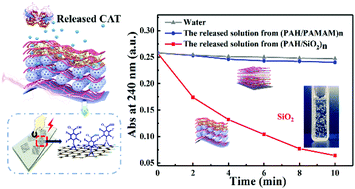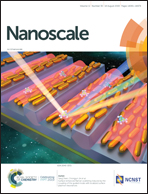A self-powered delivery substrate boosts active enzyme delivery in response to human movements†
Abstract
Stimulated drug releases in response to human movements are highly appealing in medical therapy and various daily uses. However, the design of a mechanically responsive substrate that presents high delivery capacities and can also preserve the activities of sensitive molecules such as enzymes is still challenging. Taking advantage of the recent development in effective piezoelectric flexible films and in molecular delivery devices, we propose a composite delivery substrate that preserves enzyme activities and enhances molecular delivery in response to human movements such as finger presses or massages. The substrate is achieved by combining two parts, which are the energy converting unit and the molecular loading and releasing unit. The energy converting unit is a piezoelectric–dielectric flexible composite film that produces enhanced electricity and preserves the electricity longer compared to a pure piezoelectric polymer. The molecular delivery unit is a layer-by-layer multilayer containing mesoporous silica particles that are assembled at pH 9 but used in neutral solutions. The releases of molecules including small molecules, peptides, and proteins are all accelerated in response to finger presses irrespective of the signs or densities of their charges. More importantly, the enzyme CAT preserves its activity after release from the composite substrates, meaning that the CAT-loaded (PAH/MS)n(PAH/DAS)n@rGO-TFB/PVDF-HFP composite substrate holds promise as a self-powered soothing pad that effectively removes residue H2O2.



 Please wait while we load your content...
Please wait while we load your content...